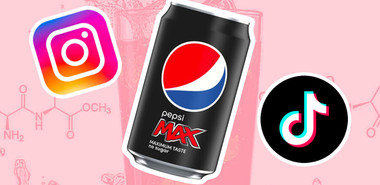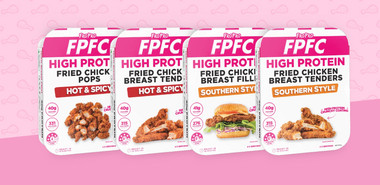What is it the DASH Diet?
The DASH diet is an eating pattern that was designed to reduce sodium (salt) consumption, assisting with improved blood pressure, and reduced cardiovascular disease risk. This diet is also high in potassium, magnesium and calcium. It is a predominately high carbohydrate, moderate protein and low fat diet. In particular, it is low in saturated fat and total fat.
It’s important to note that while DASH is a healthy diet – it is not a weight loss diet. Adjustments can be made to support weight loss and/or further health goals.
There is a strong evidence base supporting the effectiveness of the DASH diet in reducing blood pressure and is considered the gold standard for lowering low density lipoprotein (LDL) cholesterol and blood pressure. LDL cholesterol is the “unhealthy” type of cholesterol that contributes to plaque build up in the arteries and increased risk of stroke.
On the standard DASH diet, the aim is to have less than 2,300 milligrams of sodium (5.75g salt) per day. There is also a lower sodium DASH diet where the aim to have less than 1,500mg of sodium (2.5g salt) per day.
A 2018 systematic review and meta-analysis found that Australians are eating 9.6g of salt per day on average. It estimated from 24-hour urine collections that Australian women had on average 7.34g salt per day and Australian men had a whopping average of 10.1g salt per day![1] This is more than double the maximum limit of 5g salt (2000mg) per day recommended by the World Health Organisation and National Medical and Research Council (NHMRC). It is estimated that only 20% of salt intake is from adding salt to meals. The majority of salt intake is from eating processed foods such as bread, cheese, biscuits, pizza, processed meats and snack foods. [2]
Excessively high salt intake is linked with stroke, high blood pressure, heart failure, kidney stones, oedema and osteoporosis.
What can I eat on this diet?
It is encouraged to focus on fruit, vegetables and low-fat dairy products in addition to a moderate amount of protein-rich foods (chicken, eggs, fish, legumes, unsalted nuts and seeds) and wholegrains. While desserts, red meat, fats and oils are allowed, they are limited to very small portions.
The DASH diet has sample meal plans with calorie targets available, ranging from 1200 to 3100 calories per day. These calories are estimated by gender, age and activity levels. Unlike other diets, calories do not need to be closely tracked. Instead, the DASH diet uses recommended serves of foods groups.
- Grains
- Fruits
- Vegetables
- low-fat dairy products
- lean meat, poultry and fish
- nuts, seeds and legumes
- fats and oils
- sweets and added sugars
- 6-8 serves of grains per day
- 4-5 serves of fruit per day
- 4-5 serves of vegetables per day
- 2-3 serves of low-fat or fat-free dairy products
- 6 or less serves of lean meats, poultry and fish
- 4-5 serves of nuts, seeds and legumes
- 2-3 serves of fats and oils

What should I avoid on this diet?
It is a diet that I consider to be minimally restrictive as there are no food groups are excluded.
That being said, many convenient meals and takeaway options are limited on this diet. This is because ready-to-eat meals and fast food options are generally very high in sodium.
For example, an Angus Bacon & Cheese from McDonalds is already 2070mg of sodium. Even healthier options like a Chicken Teriyaki Footlong is 1410mg of sodium before cheese, sauces, and salt is added.
In order to stay below the sodium limit in the DASH diet, it is suggested that cured or processed meats (ham, bacon, salami, sausage, smoked salmon, sardines) and frozen meals (pizza, lasagne, battered fish) are limited. Condiments and sauces are also a big source of salt, therefore, individuals need to be cautious and seek out low-salt alternatives.
Additionally, canned goods (soups, beans, tuna, spam), instant noodles and salty snacks such as chips, pretzels, salted nuts are all high in sodium. While there is an allowance for sweet foods, salty snacks are not included as part of the DASH diet.
Thankfully, there are plenty of low sodium alternatives available for most foods and it is not necessary to give up your favourite foods on this diet.
| High Sodium | Low Sodium |
| Bacon, ham, salami | Low-sodium turkey or chicken |
| Canned Beans | Dried beans |
| Peanut butter | No added salt peanut butter |
| Canned fish in brine | Drained, water or oil packed canend fish |
| Feta cheese, halloumi, blue cheese, Edam | Goat cheese, ricotta, parmesan, cream cheese |
Pros & Cons
- Unlike the majority of popular diets, there is a strong evidence base supporting the DASH diets with high quality, randomised controlled trials highlighting its effectiveness in reducing blood pressure.[3] It’s effective in adults with or without high blood pressure.
- It reduces your risk of heart disease. It is particularly useful for individuals aiming to reduce their risk of developing cardiovascular disease. If you have family members that have had cardiovascular disease or stroke, incorporating the principles of the DASH diet can help protect you and your loved ones.
- Following a DASH diet can also help protect against cancer, in particular breast cancer and colorectal cancer. This is likely due to this diet being rich vitamins, minerals, antioxidants, and fibre. [4]
- Since the DASH diet is focused on long-term, sustainable health changes instead of a quick fix, there are no known adverse side effects. This starkly contrasts to low-carb diets where headaches, fatigue, poor sleep, and mood swings are common. The DASH diet appears to be a safe and sustainable diet.
- It does not require you to closely track calories if you don’t want to. While different calorie plans are available, focusing on serving sizes of different food groups allows you to reap the benefits of the DASH diet without weighing and tracking everything you eat.
- The DASH diet encourages home-made meals which is often more affordable and healthier than takeaway options. It also doesn’t require any expensive supplements or over-priced “superfoods.” This makes this eating pattern more accessible to individuals who have a limited food budget.
- The DASH diet requires individuals to plan, prepare and cook the majority of their meals. This may be a barrier for individuals with limited meal planning and cooking skills, or limited access to cooking facilities.
- It also requires some nutrition knowledge and a good understanding of different food groups. Individuals also need to be willing to read labels in order to find low-salt alternatives.
- The DASH diet has also been criticised for not having a comprehensive categorisation of types of foods. There are some foods that are argued to be miscategorised. For example, unsalted pretzels are considered part of the grains category alongside whole-wheat bread, oatmeal, brown rice, and popcorn. I would consider pretzels a snack food – rather than a core food that is encouraged to have daily.
- The DASH diet does not have an option for vegetarian and vegans. However, it can be adapted to be plant-based by replacing the meat, poultry and fish category with tofu, tempeh, edamame, textured vegetable protein, legumes and beans. Finding calcium-fortfied and low-fat plant-based milk and yoghurt alternatives is also necessary. may be difficult for vegetarian and vegans
- The use of exclusively low-fat dairy in the DASH diet contrasts the Australian Guide to Healthy Eating that has changed it stance on full-fat dairy. In the last few years, there is no longer a recommendation encouraging Australians to eat low-fat dairy. This algins with the Heart Foundation’s stance which highlights that there is not enough evidence to recommend reduced-fat dairy products over full-fat dairy in healthy individuals. Individuals with heart disease or high cholesterol, however, are still recommended to eat reduced-fat yoghurt, cheese and milk.[5]
Who is this diet suitable for?
The DASH diet is useful for the everyday health-seeker aiming to prevent chronic disease later in life. It is also appropriate for individuals with a heart condition or at high risk of developing cardiovascular disease.
As it is a minimally restrictive diet, the principles of low sodium, in addition to, high fibre, potassium and antioxidants is suitable for healthy eating all ages.
Who is this diet NOT suitable for?
While the DASH diet is appropriate fore most populations, it may need to be adapted for:
- Endurance Athletes or Athletes training in hot, humid climates
This diet may need to be adapted for athletes that lose a lot of sodium through their sweat. Endurance athletes competing in events longer than 2 hours can lose 4g of salt.[6] Therefore, the low sodium target in the DASH diet may not be appropriate for endurance athletes.[7] - Individuals with chronic kidney disease
It is extremely important for blood pressure to be controlled in individuals with chronic kidney disease to prevent complications. This is because high blood pressure can damage the blood vessels within the kidneys, causing them to no longer work properly. When it comes to kidney disease, however, potassium, phosphorous and protein are often restricted. As kidney function declines, the kidneys struggle to filter out phosphorous and potassium. Therefore, the DASH diet which is high in all three nutrients is inappropriate for individuals with kidney disease. Note that in individuals with normal kidney function, these nutrients do not need to be limited.[8]
How do you get started?
- Audit your diet. Compare how many serves of each group you’re having with how much the DASH diet recommends. What area do you want to work on first?
- Start slow when adding in fibre to prevent getting bloated, gassy and constipated. Begin by adding in one vegetable serving a day until you reach the recommended 4-6 serves.
- Have one vegetarian evening meal a week. This helps increase your legumes, nuts and seeds serves while decreasing your red meat intake.
- Find healthy, low- salt snack alternatives. For crunchy and savoury snacks, I recommend homemade popcorn, unsalted nuts and fava beans. If you feel like something creamy and sweet, yoghurt, custard or fruit with light whipped cream are all great options.
My final verdict
The DASH diet is a heart-healthy, fad-free diet that is backed by a strong evidence base. They offer clear guidelines that is achievable for the everyday Australian, however, this diet is best adapted to your goals, lifestyle and preferences.
Recommended Meal Provider for the DASH diet:
Searching for a meal provider that is best suited for the DASH diet? My pick would be Nourish’d. The majority of it’s meals have less than 300mg of sodium (which is less than half of standard meal prep meals)!
DASH Diet FAQs
What do you eat on the DASH diet?
The DASH diet is focused on low-salt foods. Whole, minimally processed foods tend to be very low in salt and make up the bulk of the DASH diet.
Can you eat eggs on the DASH diet?
Yes, one large egg is only 62mg of sodium. Therefore it is considered a low sodium food that you can eat on the DASH diet.
What is not allowed on the DASH diet?
No foods are off-limits on the DASH diet but high-salt foods are limited. This includes processed or cured meats, chips, some cheeses and many takeaway food options.
What does DASH diet mean?
DASH stands for Dietary Approaches to Stop Hypertension. This diet is used to reduce and manage high blood pressure, which is important in preventing heart attacks and kidney damage.
What do doctors say about DASH diet?
Due to the strong evidence base for the use of the DASH diet in reducing high blood pressure, many doctors are in favour of the DASH diet.
Can you drink coffee on DASH diet?
Yes, you can definitely still have coffee on the DASH diet.
Is the DASH diet good for hypertension?
Definitely! Arguably, the DASH diet is the best diet for improving hypertension.





Hi….my husband has high bp high cholesterol & fatty liver.
Will the dash diet be suitable for all these issues.